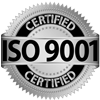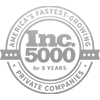Understanding the Healthcare Sales Funnel: Problem Statements and Root Cause Analysis

Understanding the Healthcare Sales Funnel: Problem Statements and Root Cause Analysis
In the healthcare industry, a structured sales funnel is crucial to ensuring that potential leads convert into loyal patients. Each funnel stage represents a distinct phase that leads to either progress or drop-off. Optimizing each stage to align with industry benchmarks is vital for maximizing conversions and reducing the cost of acquiring new patients.
This blog will cover the typical healthcare
sales funnel stages and integrate root cause analysis to identify common
issues that prevent leads from moving smoothly through the funnel. By understanding
these challenges, healthcare providers can implement targeted strategies to address
them, ensuring a more effective sales funnel.
Sales Funnel Stages in Healthcare

The graphic above outlines a typical healthcare sales funnel, breaking down the journey of 100 generated leads through various stages until the final conversion. The stages are as follows:
- Lead Generation: 100 Leads Generated
- Lead Qualification: 60 Leads Qualified
- Interest: 40 Interested Leads
- Appointment Scheduling: 20 Appointments Scheduled
- Appointment Visit: 10 Appointments Visited
- Conversion: 5 Conversions
Each stage comes with its own performance benchmarks and problem statements, which must be addressed to ensure the highest conversion rates.
Root Cause Analysis of the Healthcare Sales Funnel
Root cause analysis helps identify the underlying issues that prevent a smooth progression of leads through the funnel. Below is a detailed breakdown of the critical problem statements at each stage and their corresponding root causes:
1. Lead Generation Stage: 100 Leads Generated
- Problem Statement: Is your Cost of Qualified Leads as per Industry Standard?
- Root Causes:
- Misalignment in Communication Strategy: Communication across different channels may differ from the overall business strategy.
- Ineffective Ad Copies: Ad copies might not be aligned with competition or user needs.
- Incorrect Keyword Targeting: Not using outcome-oriented keywords that resonate with potential leads.
Solution Recommendations:
- Refine ad messaging to reflect the needs of the target audience.
- Regularly review keyword strategies and performance metrics.
- Ensure that all communication channels are synchronized with a unified brand message.
2. Lead Qualification Stage: 60 Leads Qualified
- Problem Statement: Is your Qualified Lead Percentage per Industry Standard (60%)?
- Root Causes:
- Inadequate Business Verification: Callers may need to verify business needs appropriately, which can lead to unqualified leads entering the funnel.
- Poor Marketing Channel Choice: The choice of marketing channels may need to be revised, resulting in a mismatch between the leads generated and the services offered.
- Inconsistent Lead Validation: The Tele-calling team may need a well-defined lead grading and validation process.
Solution Recommendations:
- Implement a standardized lead scoring system.
- Optimize marketing channel selection based on historical data.
- Train the sales and tele-calling team to identify and qualify leads better.
3. Interest Stage: 40 Interested Leads
- Problem Statement: Is your Interested Leads Rate reasonable (40%)?
- Root Causes:
- Lack of Relevant Communication: Business verification may need to be performed appropriately, leading to disinterest.
- Unfocused Marketing Budget Allocation: Resource allocation may need to align with the most effective channels.
Solution Recommendations:
- Refine the content strategy to provide value at this stage, addressing the concerns and needs of the leads.
- Reallocate the budget to prioritize channels that have shown higher engagement.
4. Appointment Scheduling Stage: 20 Appointments Scheduled
- Problem Statement: Is your Lead Appointment Scheduled Rate reasonable (20% to 25%)?
- Root Causes:
- Ineffective Customer Relationship Management (CRM): Manual or poorly automated processes may hinder appointment scheduling.
- Misalignment in Telecalling Pitch: The pitch used by the telecallers may not align with the brand’s positioning, leading to a disconnection.
Solution Recommendations:
- Implement automated CRM solutions to streamline appointment scheduling.
- Train telecallers to align their communication pitch with the brand’s value propositions.
5. Appointment Visit Stage: 10 Appointment Visits
- Problem Statement: Is your Lead Appointment Visit Rate good (10% to 12%)?
- Root Causes:
- Weak Brand Representation: Consistent brand representation may need clarification, or leads may be dissuaded from attending appointments.
- Inadequate Follow-Up: Lack of timely follow-up can result in no-shows or cancelled appointments.
- Lead Acquisition Level Issues: Target audience may need to match the overall value proposition, leading to lower attendance rates.
Solution Recommendations:
- Implement a consistent brand representation across all touchpoints.
- Establish a robust follow-up system, including reminders and check-ins.
6. Conversion Stage: 5 Conversions
- Problem Statement: Is your Lead Conversion Rate good (5% to 8%)?
- Root Causes:
- Expectation Mismatch: The value proposition presented during earlier stages may not match the in-centre experience.
- Lead Engagement Post Visit: Follow-up post-visit may not be sufficient to address lingering questions or concerns.
Solution Recommendations:
- Ensure that in-centre experiences align with the promises made during the lead nurturing stage.
- Use personalized follow-up strategies to keep the lead engaged and move them towards conversion.
Conclusion: Optimizing the Healthcare Sales Funnel through Root Cause Analysis

The healthcare sales funnel is a complex journey that requires continuous optimization at every stage. By conducting a detailed root cause analysis, healthcare providers can identify bottlenecks and implement targeted strategies to address them. From lead generation to conversion, every stage offers an opportunity for improvement.
Executing these best practices and continuously monitoring the performance against industry standards will help healthcare providers enhance their sales funnel efficiency, reduce costs, and ultimately increase patient acquisition rates.

Blog Admin:
Ravinder Bharti
CEO & Founder - Public Media Solution
About: Ravinder Bharti is the Founder and CEO of Public Media Solution,
a leading
marketing, PR, and branding company based in India.









